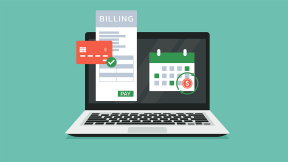Does pre-approval affect your credit score?

Applying for a credit card is exciting, whether it's your very first card or one that comes with tons of enticing rewards. Regardless of the card you're considering, you could be feeling a little insecure about applying. If it's your first card, it could be daunting—you may have an array of questions such as "will I get approved?" and "what will my rates be?" If you're applying for a premium card you may be wondering if you've demonstrated an appropriate level of creditworthiness to be eligible for consideration.
Going through the pre-approval process can be helpful, as it may give you an idea of where you stand.
However, you may still be wondering:
- How do pre-approvals work?
- What steps should I take before going through the pre-approval process?
- Does getting pre-approved hurt my credit score?
- Do issuers run a hard inquiry when they send me a pre-approval offer?
Let's address these questions below.
How do pre-approvals work for credit cards?
To help provide the potential credit card issuer with insights about you and your credit, the pre-approval process may include a soft credit check (or a soft inquiry). A soft inquiry run by an issuer allows them to see basic information like your credit score and how often you open up credit card accounts. This kind of inquiry will not affect your credit score but may appear on your credit report.
Now that you know that soft inquiries are part of the pre-approval process, let's discuss ways that you can put yourself in good standing so you can help increase your chances of pre-approval.
Steps to take before getting pre-approved
To help solidify your chances of getting pre-approved, you may want to take a few steps. Note that the following can help increase your credit score, and a higher credit score can provide a positive reflection of your creditworthiness and your financial responsibility.
Step 1: Request your credit report
The first step is to know where you stand with your credit. Once a year, you can get your free credit report from one of the three credit bureaus— Experian™, Equifax® or TransUnion®. You can also receive your free credit score and your Experian credit report when you enroll in Chase Credit Journey® regardless of whether you bank with Chase or not. You'll also get information about what your score means and ways you may be able to boost your score.
Having this information on hand helps the credit card issuer examine your credit up close and determine if you're a candidate for pre-approval. If you find that your score is not quite as high as you'd like it to be, don't worry—the next few steps can help you get to where you need to be.
Step 2: Dispute any errors on your credit report
It's possible that while you're reviewing your credit report you find an error. Perhaps there's a charge you don't recognize, for example, someone may have used your information to pay for something without your approval or awareness. With some diligence, you may be able to get these errors removed from your credit report, which could reflect positively in your score. Keep in mind that credit scores generally get updated once every month—however, with Credit Journey®, you can get an updated score every 7 days if you check frequently.
To dispute an error, contact the credit bureau(s) that issued your report and describe your situation in detail. This can be done either online or over the phone.
Identity Monitoring could help
If you believe your account information was stolen, be sure to also contact your issuer to freeze any accounts that are at risk and avoid future errors. If you are enrolled in Credit Journey, you also will have access to a dispute guide that can help you understand the steps to dispute errors on your credit report. You can also enroll in Credit Journey's free identity monitoring service, which will alert you if your data or information is breached.
Step 3: Lower your credit utilization ratio
Your credit utilization ratio is a key component in generating your credit score. It accounts for about 20% of your VantageScore® and 30% of your FICO® score. This ratio refers to the proportion of the available credit you're using across all your credit accounts. Paying off your credit card balances can help lower your ratio and make you a more appealing candidate for pre-approval.
Step 4: Make timely payments and maximize your income
Your credit score is heavily impacted by your payment history, which represents your ability to make credit card payments on time and in full. If you are consistent and vigilant about paying your bills on time, your credit score could improve over time.
Of course, it's much easier to pay these bills if you have the appropriate funds. Take a look at your credit card statements and your accounts—dissect your account activity and find ways to cut costs from things like takeout, coffee or subscriptions you rarely use. The little things will add up!
Does getting pre-approved hurt your credit score?
Getting pre-approved does not hurt your credit score. As we discussed earlier, a pre-approval may require running a soft inquiry, which, unlike a hard inquiry, does not hurt your credit score.
Do pre-approved offers require a hard inquiry?
No—they may involve a soft inquiry, which won't affect your credit score. If you are pre-approved for a specific card you will receive an offer. The offer itself doesn't generate a hard inquiry, so don't worry—just because you have the offer doesn't mean you've hurt your score. But if you decide to finally apply for that credit card offer, a hard inquiry will be run by the issuer, and this could negatively affect your credit score by a few points.
If you've been pre-approved for a credit card, you should feel excited and encouraged that you're on the right track with your journey towards good credit. The more you take active steps towards improving and protecting your credit score, the more opportunities you may unlock—from more premium cards to lower interest rates.



